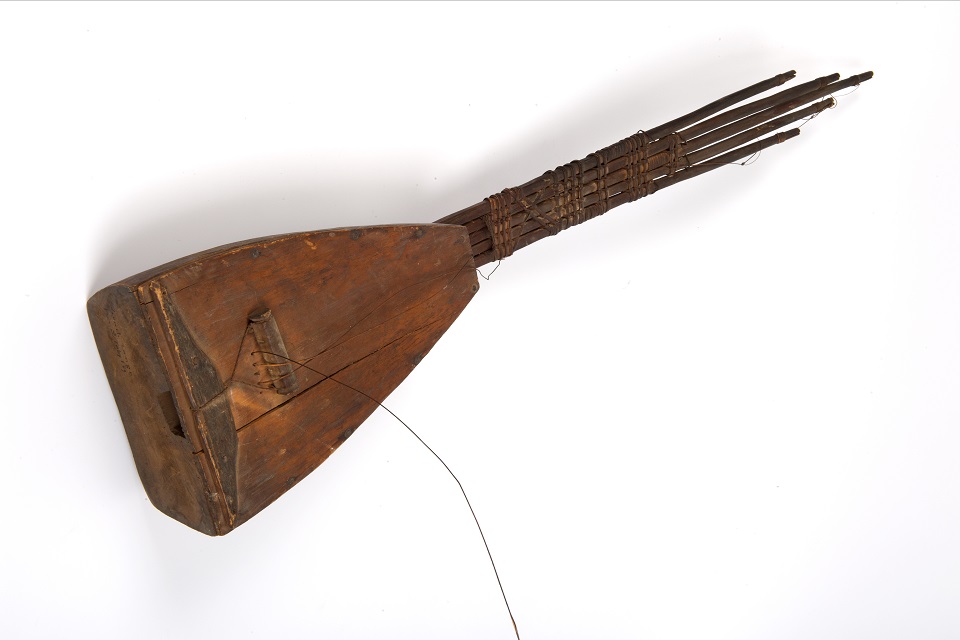Record details
| Pluriac | |

|
|
|
Instrument played across the African continent. |
|
| Northampton Museum and Art Gallery | |
| 1800-1900 | |
| Africa | |
| Wood, vegetable fibre and organic material | |
|
Instruments have been made and played in Africa for thousands of years. The Pluriarc precedes the African harp and European intervention by several centuries and was first observed by Europeans in 1619. The Pluriac contains 5 bows made of branches. Each string would have been made from a vegetable fibre and been attached to the five flexible branches. The strings are then tuned by creating a tension using the curve of the sticks. The branches are attached to a wooden sound box, which had a hole in the front for the sound to come out. The shape suggests that it comes from West Africa, the Congo or Gabon. The Seki people who live here are well known for their skill with wood. Researched as part of the Knowledge of the unseen project. |
|
| Not on display |
